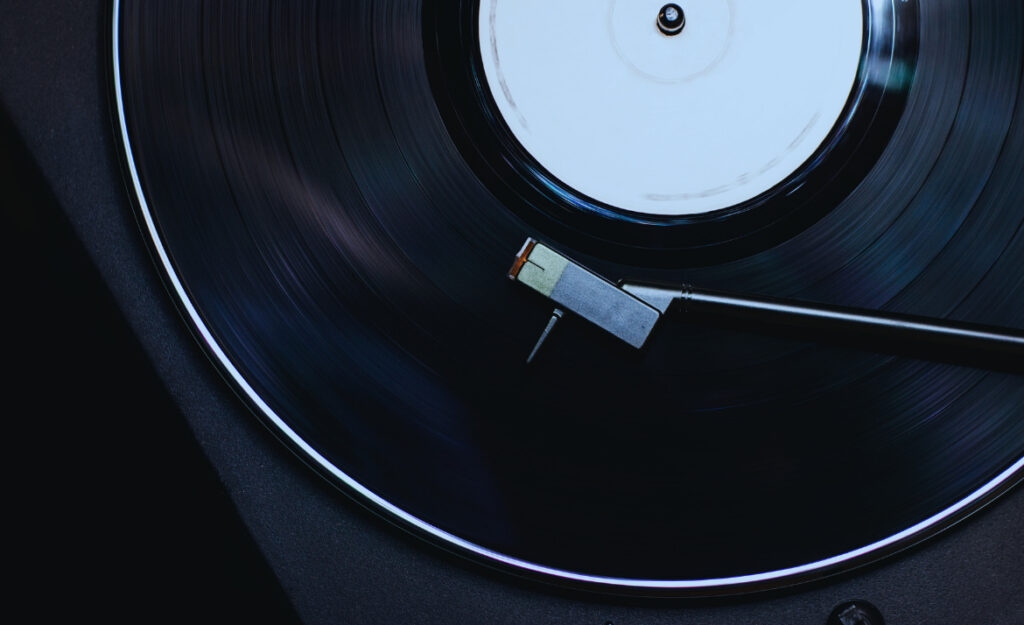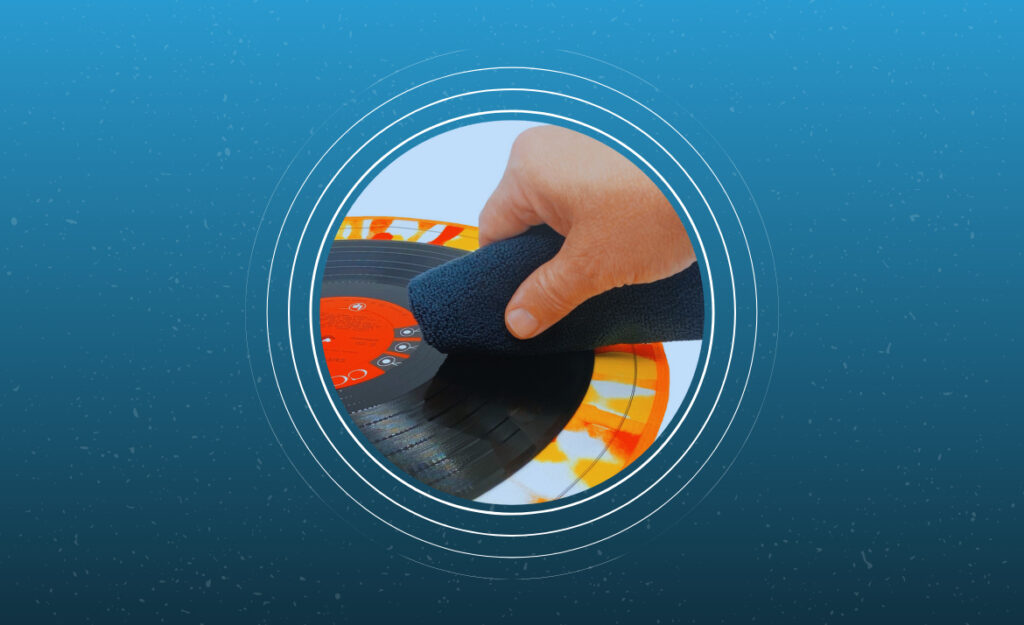
Most people recall the joy of lowering a stylus onto a well-loved record, catching the deep warmth that only vinyl produces. Even that nostalgia fades, though, when static, crackle, or dust spoil the moment. Savvy collectors adopt regular vintage record cleaning to keep their sound crisp and collections valuable, integrating tried-and-true habits into routine care.
While many look for the rarest pressings, it’s the shine of a spotless groove that grabs attention up close. Clean records don’t just improve flavor; they also prevent long-term damage that can reduce both listening quality and resale appeal. Every collector benefits from knowing how to do this right.
Read ahead to pick up vintage record cleaning techniques, discover what separates the casual listener from the mindful curator, and establish your own process for maintaining vinyl health. The difference isn’t subtle—every collector can hear and see it.
Assessing Record Condition Before Any Cleaning Step
Evaluating your vinyl’s surface ensures cleaning compounds won’t exacerbate unseen harm. Collectors visually inspect records in strong, indirect light for dust, smudges, scratches, and warps, letting you avoid accidental abrasion or water damage during vintage record cleaning.
For a novice, the difference between surface dirt and actual groove damage may seem small, but each calls for a distinct response. Handling every record edge with washed hands and minimal direct finger contact keeps transfer of new oils and debris to a minimum.
Spotting Playable Surface Issues
Collectors commonly tilt records at an angle beneath a lamp, carefully looking for smeared fingerprints or caked-on dust. Shallow lines may not affect playback, but a thick scratch or pitting won’t buff out with easy scrubbing—these need extra caution.
When examining the dead wax (the smooth runout groove), watch for unusual discoloration or a cloudy film; both reveal how a record has experienced prior cleaning. If you notice residue, it’s wise to modify your cleaning routine to avoid compounding mistakes.
Listen for repeated pops or static when you cue the needle. Sometimes, a visible mark doesn’t match an audible issue; equally, even spotless vinyl can snap, suggesting invisible static or dust. Repeated play reveals deeper groove problems that visual inspection misses.
Testing for Warps and Other Structural Problems
Lay a record on a truly flat surface, then sight from edge-on. Obvious bowing or warping, even in the absence of cracks, means press forward carefully—a warped record may stress your stylus or even damage a turntable over time.
Gently flexing the outer rim (without pressing) reveals how rigid the disc still feels. Brittle or overly flexible vinyl might call for a more conservative soft-brush clean, or, in severe cases, storage as a display piece only.
If you’ve spotted odd bubbling or a ‘wavy’ look on either side, refrain from wet-cleaning until you’ve checked for groove integrity. Water can worsen existing structural deformations, so prioritize dry methods when in doubt.
| Issue | Visual Cue | Recommended Action | Key Takeaway |
|---|---|---|---|
| Dust | Fine, powdery surface | Dry brush or air-blow | Remove loose dust first |
| Fingerprints | Oily smears or streaks | Light solution, microfiber | Treat gently; dissolve, don’t scrub |
| Deep scratches | Visible grooves or cuts | Avoid aggressive cleaning | May be unfixable—clean around, not across |
| Status residue | Grayish or cloudy patches | Change method; rinse thoroughly | Old cleaner needs full removal |
| Warping | Noticeable bend or bowls | Dry clean only, store upright | Avoid heat and pressure after cleaning |
Choosing the Right Tools for Effective Record Care
Using purpose-built cleaning tools prevents more damage and enhances audio clarity. Always match tool softness to the job. Ultra-soft carbon fiber brushes lift dust without pressing debris deeper, while lint-free cloths gently wipe away finer residue during vintage record cleaning sessions.
Brushes with coarse bristles could scratch the vinyl surface, and any rag not specifically marked for use on delicate surfaces risks leaving fibers or hazy scratches. Invest in single-purpose gear to protect collection longevity.
Setting Up Your Cleaning Area
Allocate a clutter-free, clean workspace before beginning any cleaning. Lay out everything in advance—including brushes, cleaning solution, drying rack, and a catch cloth for drips. Proper prep stops missteps, like sudden splashes or dropping records mid-process.
- Sanitize hands thoroughly before handling any album.
- Keep a lined tray beneath your work to catch accidental chemical drips or record slips.
- Place both cleaning solution and brushes within within arms reach—never walk away mid-clean for supplies.
- Have clean, dry microfiber cloths available for each side of the record.
- Set aside a special mat or towel to allow cleaned records to fully air dry without pressure marks.
Arrange tools so you can move in a single direction, reducing handling and avoiding recontamination as each side is cleaned. This routine builds consistency and keeps every vintage record cleaning process safe.
Essential Record Cleaning Toolkit
Every collector should equip their kit with some must-have essentials: a purpose-made antistatic record brush, a soft, laser-cut microfiber cloth, and a bottle of a mild, alcohol-free record cleaning solution.
- Pick a carbon fiber brush with a comfortable handle—it whisks static and dust from grooves without snagging delicate edges.
- Avoid paper towels and generic dusters. Even ultrafine fibers can clog record grooves and grind bits deeper over time.
- Invest in an antistatic gun to neutralize surface charge before brushing—reducing the chance of dust return right after cleaning.
- Store liquids in a clearly labeled, spill-proof squeeze bottle to control application and avoid waste.
- Dedicate one soft drying rack to records only. Plastic, wire, or mesh should cradle but not squeeze your albums as they dry.
Never let brushes touch anything but records; cross-contamination from household dirt easily undoes careful efforts. Each kit item should have a labeled, dust-free home when not in use, ready for the next cleaning session.
Applying the Safest Cleaning Methods for Vinyl Grooves
Gentle techniques strip away stubborn buildup without risking groove distortion or label damage. Always move in the direction of the groove and never apply more pressure than a gram or two per square inch during vintage record cleaning.
Start with dry brushing to remove surface dust. Next, a cleaned microfiber cloth dampened just enough—never wet—tackles oily spots and finer debris, ensuring only clean solvent touches each groove.
Executing a Two-Step Wet Cleaning Process
First, manually pre-clean using a carbon fiber brush. Next, lightly apply a record-safe solution with a microfiber pad in concentric circles, never scrubbing across grooves. Give each side enough time to air dry upright, avoiding heat or direct sun exposure entirely.
If your solution comes in a spray bottle, mist away from the label and always dab, never rub. Too much moisture shortens record life. Patience here preserves both label ink and groove detail for decades.
Repeat only as needed—once per few months for lightly used records, or after every few plays if living in dusty or smoky environments. Over-cleaning risks removing plasticizer and harming the original surface.
Specialized Cleaning for High-Value or Rare Vinyl
Rarer records with fragile covers or custom labels may need customized approaches. Always test any new cleaning solution on a less prominent spot first, and avoid automated machines for severely damaged pieces. A little restraint can save historical artifacts.
In display settings or humidity-sensitive environments, use a record-safe air duster for removing dust from jackets and edges. This preserves both sleeve art and structural integrity over time—that’s especially key for gatefold albums.
If you ever hear skips even after cleaning, set the record aside and inspect both grooves and stylus. Sometimes a minor chip in the stylus edge becomes apparent only after routine vintage record cleaning exposes old playback problems.
| Cleaning Method | When to Use | Time Needed | Priority Tip |
|---|---|---|---|
| Dry brushing | Every play | 30 seconds | Removes loose dust; safest method |
| Spot cleaning | Visible smudges | 2–3 minutes | Treat with soft, barely damp pad |
| Wet cleaning | Deep buildup | 10–15 minutes | Avoid labels; dry upright |
| Air duster | Sleeves/jackets | 10 seconds | Protects artwork, avoids abrasion |
| Professional service | Rare/valuable records | Varies | For historic or risky items only |
Protecting and Storing Records After Cleaning
Once albums are spotless, storage choices directly affect longevity. Replace any paper or torn inner sleeves with anti-static polyethylene liners, then use stiffer, acid-free outer covers to shield against shelf-wear.
Shelve records upright, never stacked, to avoid edge warping. Give each record 2 to 3 millimeters clearance so sleeves don’t jam or stick together on humid days.
Environmental Control for Record Collections
Dedicated collectors maintain stable storage environments between 60–70 degrees Fahrenheit and humidity near 45 percent. This setup delays static accumulation, prevents mold, and ensures the vintage record cleaning schedule isn’t wasted by harsh conditions outside your control.
Avoid storing records near radiators, sunny windows, or external walls. Subtle temperature shifts can warp even the flattest albums, and sudden spikes may quickly undo years of good stewardship.
If possible, monitor climate with a digital hygrometer placed near the collection—not just in the same room. Immediate alerts to high humidity help you adjust storage before any issues develop.
Using Archival and Display Techniques
Collectors displaying favorites should use UV-resistant acrylic stands. These offer a museum-quality look, keep records vertical, and block damaging sunlight rays. Make standing albums a rotation, not a permanent feature—short-term display means fewer chances for accidental exposure or bending.
If you ever frame covers, use acid-free mats and reversible adhesives. Real archival tape won’t stain art or slip over time, unlike common masking options. The result preserves both emotional and monetary value of highly collectible editions.
Include a backup digital copy for all the top pieces in your collection. This approach lets you show off album covers, play tracks, and even swap listening order without ever removing the original from safe storage. The original record stays pristine, ready to be enjoyed decades down the line.
Recognizing Mistakes to Dodge When Grooming Vinyl
Every collector faces temptation to rush the process, but skipping steps or using the wrong gear can turn a minor smudge into permanent groove damage. Being aware of these mistakes keeps your vintage record cleaning efforts strict but gentle.
Neglecting to read cleaner ingredients risks leaving sounding residue or chemical burns behind. Fragrances, alcohols, or household dusting sprays can all degrade vinyl over time, so inspect every cleaning product label before use.
The Danger of Using Household Materials
Common advice sometimes suggests window cleaner or regular dish soap. Avoid shortcuts—in practice, these either break down the record material or leave residues that attract even more dust later. Use only record-specific formulas and tools.
- Don’t use paper towels; they scratch grooves and embed lint deep inside.
- Never clean vinyl with canned air unless it’s labeled for electronics or delicate media.
- Skip any abrasive pads or scrubbers.
- Don’t oversaturate—excess liquid weakens labels and adhesive bonds.
- Test new products on a low-value album first, not a prized LP.
Gentle, patience-driven efforts always work better long-term. Experienced collectors know that deliberate handling and product selection means no single play session ever puts a record at risk.
Avoiding Damage by Understanding Static
Static builds up quickly in dry rooms, especially during winter or air-conditioned months. Run an antistatic brush over every record before play and again after cleaning. This ensures dust won’t settle deep between plays, and repeated use keeps delicate headphones safe from sudden pops.
- Ground yourself before touching any vinyl to discharge static from your body.
- Avoid cleaning records on carpeted surfaces.
- Store antistatic sleeves vertically, never slanted, to aid passive discharge.
- Wipe brushes with a clean, antistatic cloth to reset their charge.
- Consider placing a grounded mat beneath your record player for every session.
Small tweaks to handling routines drastically improve vintage record cleaning results. It can mean fewer repeat washes, less static, and brighter listening—all stemming from five minutes’ preparation each week.
Building a Proven Routine for Vintage Record Cleaning
A set sequence for care reduces variables and protects every album equally. Savvy collectors build routines around both maintenance cleaning and deeper treatments for older or new-in-collection records.
Think of vintage record cleaning like making coffee; specific order and attention to temperature yield the best result. Skipping a filtration step—like ignoring the dust brush—affects taste just like overlooking a ground filter affects your cup.
Quick-Clean Sequence for Frequent Listening
A quick four-step routine after every play keeps dirt from accumulating. First, brush dry dust away. Second, run an antistatic brush. Third, check for prints. Fourth, store upright in a clean sleeve immediately.
This routine doesn’t just protect current enjoyment; it sets future expectations for care whenever you pull out a long-stored favorite. Try jotting the steps on a sticker inside your record cabinet for new household listeners to follow.
Mastering this basic order means new records never join the collection with grime or static, and older albums benefit from renewed attention once more. Update the process as you learn, swapping gear or adjusting the order to fit needs.
Deep Cleaning on Special Intervals
Plan deep cleaning every six months or as needed for albums played less frequently. Set aside one weekend, gather supplies, and rotate five to seven records per hour through a complete process of dry, wet, antistatic, and air-dry steps.
Write a log with cleaning dates and any issues found—warp, crackle, or smell. Track progress and make those notes available for buyers or other collectors, proving the careful steps taken for every piece over time.
Once your system is running, refine as you grow. As collections get bigger, batch-clean by label or genre, or trade duties among friends to speed up group sessions. There’s pride in records that sound like new.
Why Clean Vinyl Matters for Collectors and Sound
Every careful cleaning pays off in both sound and value. Fastidious vintage record cleaning transforms playback, extending the lifespan and clarity of every album. A truly clean groove reveals pops, clicks, and basslines as artists intended them to be heard.
This isn’t just about preservation, but pride in stewardship. Reliable care brings resale value and easy trade, all while maintaining the rich sonic texture that makes vinyl unique. Friends notice the difference, and so does your own ear.
Make vintage record cleaning part of your collection’s story—a quiet routine with clear outcomes. Consistency ensures albums outlive generations, capturing both the music and the memories for years to come.



